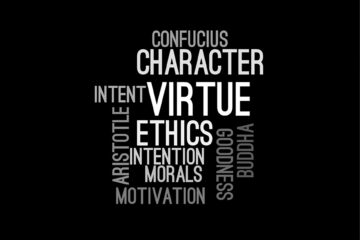![]()
Introduction
According to professor John Rawls, the amount of wealth a person acquires in his lifetime is not just because of his hard work, it is also because of family, different levels of skills and talents, time, etc. You cannot morally claim that the entire wealth that you have exclusively belongs to you because there are many things that are out of your control.
Rawls uses a hypothetical “State of Nature” approach to justify his choice of organizing principles for a just society. He calls his state of nature “The Original Position”, the most prominent attribute which is that the people who imagine selecting the principles of justice to govern the society, are doing it blindly or without any prior knowledge about their position within the society. They are visionless of their own interests and are placed in a hypothetical situation where they do not know what personal interests and attributes they shall possess. They have no advanced consciousness of whether they will be strong and able-bodied or disabled, intelligent or not intelligent, born to a family with a strong financial background or to a broken home. This situation in which the persons are in the original position and know nothing about their own position in society is referred to as “The Veil of Ignorance”. He argued that behind the veil of ignorance, the negotiators or the lawmakers would make laws that provide access to goods and opportunities to everyone equally regardless of the characteristics they possess and the position they enjoy in society.
One of the core dilemmas in the theory of Rawls is the tension between liberty and equality. Rawls’ theoretical work addresses equality and creates a theory of justice that realizes both equality and liberty. He attempts to harmonize the two seemingly conflicting ideological values. This article seeks to explain Rawls’ theory of justice and understand how it tries to balance between individual wants such as liberty and the needs of the greater good such as equality.
Rawls’ Principles of Justice
Rawls claims that in the end the principles that would be agreed to would be something like the following:
Principle I – Liberty Principle
Each person is to have an equal right to the most extensive total system of equal basic liberties compatible with a similar system of liberty for all.
The first principle, also known as the liberty principle, is an expression of a fairly straightforward idea of liberalism. Each person has some into feasible claim to a fully adequate scheme of equal basic liberties such as, freedom of thought and liberty of conscience, political liberties, right to vote and participate in politics, freedom of association etc. If people do not have these rights/liberties, you’re to essential moral powers that is, sense of justice and sense of good can never develop. Every human being should develop these to moral powers for leading a worthwhile life.
Each person should be granted freedom as they find fit in their own interest without any interference with the right of liberty of others. He does not include the right to own all types of property or a freedom to contract. Rather, he does this to keep the options open regarding the actual structure of the economic system a just society could organise around.
Principle II- Social and Economic Inequalities
Social and Economic inequalities are to be arranged so that they satisfy two conditions-
- Attached to offices and positions open to all under the conditions of fair equality of opportunity[1]
Formal equality is in a negative sense that the state shall not stop anybody from doing something. While, fair equality is positive and enables the state to help people in doing something. Principle I establishes formal equality where if a person wants to acquire education, they shall not be deprived of expressing or learning. However, due to morally arbitrary factors, not everyone has fair equality of opportunities to capitalize. Hence, the state should enforce some framework or run their own training institutions/schools as per principal 2a.
- To the greatest benefit of the least advantaged, consistent with the just savings principle
The second principle is the difference principle, which is a more radical claim for justice than is usually accepted in developed democracies. After principle 2a is satisfied, there would still be circumstances where people are standing at different positions from each other. Some people might still be lagging behind due to various reasons such as ignorant families, lack of skill, etc. These people will be left out and will have to settle for lower jobs. According to Rawls, this is where the taxation system or the theory of distributive justice plays a role. Even after the state does everything for everyone, there are still disparities in the society created not just because of the people’s hard work but also due to some morally arbitrary factors in force.
Finding the balance between Liberty and Equality
After laying out the two principles, Rawls establishes the relationship between them. The two principles of justice are arranged in lexical order that is, priority rule. The first principle has priority over the second. Thus, the first principle (liberty principle) has the first order[2]. In addition, in any situation, people should have hope for the future[3]. To do this, people should have the opportunities that they want[4]. Thus, the principle of equal opportunity is the second and the difference principle has the last order[5].
Due to this insistence on liberty, the theory of Rawls seems to ignore the matter of economic inequality. This restricts the equality principle and hence, cannot be treated as a proper standard for balancing equality and liberty. For Rawls, if the material means, which have good quality, are fully available, people’s interest in liberty grows stronger, and their interest of further economic and social advantage decreases[6]. Although, people are selfish in Rawls’ assumption and they shall have no intention to give up their economic interest and social status despite having the ways to increase material means.
To resolve the problem of economic inequality, the equality principle should be treated at par with the liberty principle in the constitutional stage. That is, the equality principle, as well as the liberty principle, should be accepted as independent criteria for judging decisions made in the political and economic spheres[7]. However, the priority rules consider the liberty principle as the first criterion to decide the societal system, thereby destroying the balance between equality and liberty[8].
Rawlsian Model and Political Liberalism
The theory of Rawls had a major limitation with the way the values of liberalism are contradicted by capitalism. The second principle, by allowing private property, undermines the maximization of liberty equally for all which is advocated by the first principle.
After the publication of A Theory of Justice, Rawls acknowledged that he had not considered reasonable pluralism in his former book. He took account of the fact that people hold diverse cultural, moral, and religious perspectives. Rawls’ conception of political justice can be described as “justice and fairness”. In his later published work, “Political Liberalism”, which consists of chapters based on his lectures and other published works over the past, he introduced an entirely new approach to the concept. Rawls admitted that a serious deficiency in his theory was his failure to adequately distinguish between “a moral doctrine of justice general in scope” and “a strictly political conception of justice[9]. So, he listed three main features of the structure of the principles[10]:
- Cooperation is distinct from merely socially coordinated activity, for example, from activity coordinated by orders issued by some central authority
- Cooperation involves the idea of fair terms of cooperation: these are terms that each participant may reasonably accept, provided that everyone else likewise accepts them
- The idea of social cooperation requires an idea of each participant’s rational advantage, or good.
According to Rawls, the principles of justice emergent in the contract must be at the base of public institutions: ‘The initial focus, then, of a political conception of justice is the framework of basic institutions and the principles, standards, and precepts that apply to it’[11].
Conclusion
The way in which Rawls seeks to deduce these principles of justice is through the idea of contract in which self-interested persons choose principles of justice[12]. After laying down and elaborating on each principle, he establishes a priority rule as a relationship between the two principles. As per the priority rule, liberty is prioritized over equality and this compromise can mitigate the tension between equality and liberty according to Rawls. However, this compromise is not the ideal way of reducing the tension. It is rather a failure in satisfying both the values.
References:
[1] Rawls, A Theory, 266
[2]https://trace.tennessee.edu/cgi/viewcontent.cgi?referer=https://www.google.com/&httpsredir=1&article=3383&context=utk_gradthes
[3] Ibid
[4] Ibid
[5] Ibid
[6] Johnston, David. p. 117. See A Theory of Justice, sec 82.
[7] Supra note 3
[8] Supra note 3
[9] John Rawls, Political Liberalism (New York: Columbia University Press, 1993), xv pp.
[10] John Rawls, Political Liberalism (New York: Columbia University Press, 1993), 16 pp.
[11] John Rawls, Political Liberalism (New York: Columbia University Press, 1993), 11 pp.
[12] Charvet, John. p. 109



0 Comments